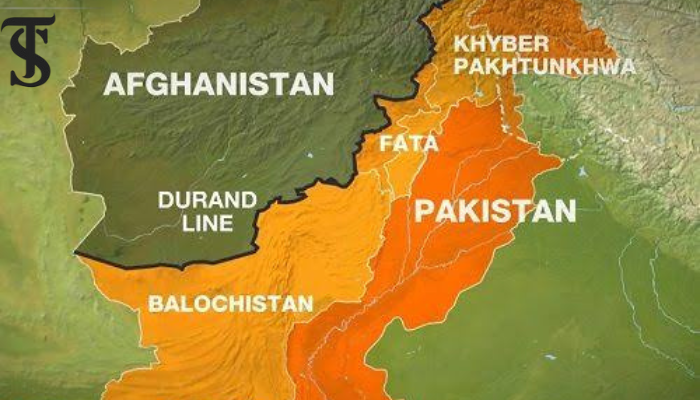Pakistan’s Water Crisis: A Looming Catastrophe

- Urgent Water Crisis: Pakistan is facing a severe water scarcity, ranked third globally, with alarming projections of running dry by 2030 due to mismanagement, climate vulnerabilities, and neglect.
- Need for Water Conservation: Effective strategies like efficient irrigation, public awareness campaigns, and incentivizing conservation practices are critical to mitigate the looming water crisis.
- Political and Societal Action: Collective efforts from both the government and society, including the creation of new water reservoirs and a multipronged conservation framework, are essential to secure Pakistan's water future.
The water crisis is a horrifying reality that will create a domino effect and unsettle our overall entangled socio-political fault lines. The water crisis, as a harbinger of the climate insecurities in Pakistan, is one of the most cataclysmic existential threats now. Imminent climate threats, particularly the ones related to our water resources, have become a grim reality for Pakistan. In the 21st century, where water is scarce and precious, we are still not acting like we are facing a potential looming threat to our very existence, which is now knocking at our doorstep while we continue to film it through screens. Therefore, extensive water conservation strategies are required to mitigate Pakistan’s forgotten dry taps.
To begin with, the historical vulnerability this country has towards climate catastrophes, especially to water scarcity, has inevitably yielded multiple climate threats till now. Pakistan already moved from being a ‘water stress’ to a ‘water scarce’ country in 2015, due to sheer criminal neglect. According to reports, Pakistan is ranked as the 3rd country suffering from an acute water crisis, and it is expected to ‘run dry’ by 2030. This highlights the urgent need to mitigate the ominous threat of water scarcity that has started to engulf this country at a rapid pace.
Despite facing water scarcity, Pakistan had its first National Water Policy in 2018, a shocking 71 years after its independence. This highlights the country’s criminal historical negligence in diverting attention towards water mismanagement, chronic depletion of water reservoirs, and addressing water insecurities. All of the statistics or reports that highlight water scarcity in Pakistan ring alarms on the dire need of a collective societal effort to mitigate issues of national and societal importance. The need for an exhaustive & fundamentally realistic ‘plan of action’ to solve such issues has started to echo through the distressed voices that suffer the most during water insecurity and scarcity.
Nonetheless, water management policies were adopted by provinces before the enactment of the country’s first National Water Policy of 2018. However, despite the looming alarms of an acute water crisis, the country’s collective awakening call is yet to be heard. Yet, no significant efforts are seen form the successive governments to mollify this formidable threat even after repetitive deadly floods and droughts. The multifaceted nature of water scarcity can evidently fuel food & water insecurity, political instability, resource scarcity, and economic turmoil across the country, risking lives of 220m residents. This domino effect has already showed us how water shortage can fuel protests, public discontent, hunger, devastation, and social unrest in general.
In addition, despite having one of the largest irrigation systems in the world and being ranked as the 4th largest extractor of groundwater, Pakistan now suffers from an alarming dwindle of water levels that have fallen below 1,000 cubic meters per capita. The squandering of vital resources, particularly water resources, has to be investigated at every level of our society. The complex interplay of inadequate water management, inefficient-irrigation methods, unawareness on water scarcity, and swapping of policy priorities, has further aggravated this situation.
Water sovereignty, an idea to protect indigenous communities from water injustice and include them in policy-making tables, particularly in water management decisions, can help in boosting stakeholder trust and engagement. This concept can provide a multipronged approach to solving issues related to water injustice, reckless water management, policy incoherence, and provide a more holistic approach to solving this looming crisis.
The water paradox, also known as the ‘diamond-water paradox’ was a concept presented by Adam Smith in the 1700s, which argued about the apparent contradictions between a market value of water and its potential usefulness for survival. The policy-making tables should keep the human survivability in priorities, instead of keeping economic gains in sole considerations. This reminds us that water, as compared to diamond, is given less importance. Despite its massive impact on our economy, human security, and survivability, water crisis has met with an unimaginable criminal negligence by our society and successive governments. Therefore, state’s priorities should reflect in mitigating exigences related to human and water security, instead of pleasing the international communities by idealistic policies.
Likewise, the vicious cycle of idealistic policies and dissipation of budget allocations, apart from climate vulnerabilities, has become the last nail in the coffin. The obsession of sequential governments with a mix of short-termism vs. long-termism ideas to solve water insecurities has started to showcase the adverse effects it can have on our overall unsettling situation. The idea about constructing dams by 2025 that was mapped out in 2018 is another failure marked in our policy-making cabinets.
Thus, to mitigate the threat of water scarcity and its fanned insecurities, Pakistan must consider massive societal changes to highlight the importance of this precious resource and its depletion crisis.
To begin with, there is a desperate need to introduce water conservation methods to reduce water mismanagement at every level of our societal infrastructure. The following are the steps that should be taken to promote water conservation and preclude the constant looming threat of water scarcity in Pakistan.
- Educate people on water scarcity through awareness campaigns, seminars, and community-engagement practices.
- Introduce incentivization on water conservation practices.
- Gradually switch to efficient irrigation systems.
- Introduce ‘green rating’ to encourage stakeholders.
- Formulate a Water Conservation Wing.
The recommendations to avert water scarcity require a multipronged framework. These suggestions for water conservation methods have been drawn from some of the best water-saving models of the world. The process of incentivization can be done by conducting water audits and surveys for water conservation practices. At home, in Pakistan, we can draw inspiration from Australia’s drip and sprinkler irrigation system, which has averted their looming water depletion crisis. According to some reports, the use of drip irrigation in Australia has increased by 50%, and it saves about 50% of water in the agricultural sector. A Water Conservation Wing, under the Punjab Environment Department, can monitor these policies, impose penalties, provide incentives, and conduct research accordingly.
These suggestions can mitigate the threat of an absolute water scarcity, but new water reservoirs are an immediate need. For provinces, they should jettison their political cards and agree on new water reservoirs instead of recklessly digging their own graves. A collective political and societal effort is required to mollify this cataclysmic and human-induced menacing threat.
Muhammad Hamza Chaudhary
The author is a student of International Relations at the University of the Punjab, Lahore, Pakistan.





